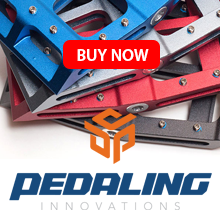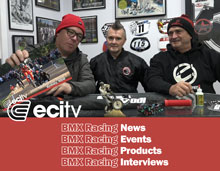Interview Supercross BMX – 25th Anniversary
In 2014 Supercross BMX celebrates it’s 25th Anniversary – 25 years is a long time in business full stop, but to last 25 years in the BMX scene with the same sole owner since the inception of the business…well that’s unheard of. If you looked at the 2014 Supercross Catalog you might have read a little about their history, we thought 25 years was a good time to start delving a little deeper and get some real background behind the brand, the products and the guy behind it all.
We envisage that this will be the first installment of a multi-part interview that we will release over time, we hope you find it as interesting as we did.
Bill Ryan’s background in the BMX industry
bmxultra.com: The first one is that I have this idea in my head that you had something to do with the SE Assassin frame? Were you involved? How?
Bill Ryan: Yes, we did do the design work for the SE Assassin, I used to work at SE starting when I was a kid having to ride my bike to the shop in Paramount, I worked there with Perry Kramer, Byron Friday, Rod Beckering, and Kendal Crabtree amongst others. I was super stoked to be a part of that. When Gary Turner and Rich Long came and bought all the equipment , Mike Devitt got me an opportunity to work at GT, as SE was closing down.
Well after I left GT we were doing TECH, and we had factory team of Brian Lopes, Billy Harrison, Brian “Bogi” Givens and Glenn Pavlosky. At that time, Mike Devitt was trying to get SE re started, and I spoke to him about doing frames for my riders. I wanted to stick with my roots. I loved SE , they were my BMX Family from way back. SO he built a custom Long PK ripper for Brian and a Custom Long Quad for Billy, the PK worked well for Brian, but the Long Quad flexed like crazy.
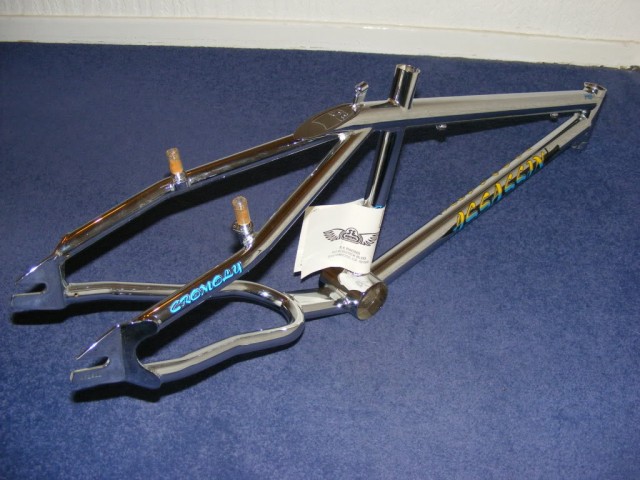
So I convinced Mike to build a traditional style frame, the Assassin, and we did up the modern geometry and the bike looked and worked well. Billy Rode one for a bit, but he kept cracking them, and the problem came in when we couldn’t get anymore, Mike was trying real hard, but he was in a bad position trying to get SE started again. So after a bit of time of waiting and trying to get Billy on other frames, we had that infamous gate start session behind the shop and get the first Supercross frame built.
bmxultra.com: What other bike companies were you involved with? GT was one of them wasn’t it?
Bill Ryan: After GT bought all of the equipment from SE, SE was about to close down, I had been working there for a long time, and Mike Devitt basically brokered a deal for me to work at GT.
When I started at GT, I was employee #10 or something like that. It was a small group. Gary Turner, Rich Long, Buzz, Sam Shockley, Anita Shockley, Phil Gwinn, Bill Duhreing, Diane Shaw, Bill Galloway, etc…
When I was first hired I did a ton of things, Sales, Customer Service, Warranty, help with shipping and packing orders etc…. It was fun, there was a ton of activity and the place was growing. When I started they had just gotten their second building. I started at the one on Container I believe and then they got the one on Commercial.
Rich Long told me that it was his goal to become the General Motors of Bicycling. And I was young, I was 17 and it was my dream job, but like any young kid, I had more ego than brains and Rich and I would butt heads all the time. And I would occasionally quit. And Rich would let me cool down for a few days and call me and ask me if I wanted to come back. When he bought Robinson, Chuck came along for a little while, but then something happened and Chuck wasn’t there any more and he hired Mindy to come in and run it.And she ran it for a while, and one of the times that I had quit, when he called me back, he added in that I would have more responsibility and would get to run the Robinson division.
So even though I was running it, I wasn’t, I got to have input on all the product design, team program, set up EXCLUSIVE Robinson Dealers, but Rich was really running the show, but let me put my spin on the brand. None of the other sales people could sell it, it was my special project.
Rich and I had a lot of battles, and I have a lot of respect for that man. RIP. If it were not for Rich Long, I don’t think BMX really would of become what it did.
It would really be strange to do a history on Rich and the people and lives he touched in BMX.
He gave me a hand, Chris Moeller, Bob Morales, Greg Swingrover, Magoo, etc….
The Supercross Frames
bmxultra.com: The number of companies that are still working with cromo are dwindling, what keeps you moving forward with cromo?
Bill Ryan: Well, that is a tough one, cro-mo is essentially dead to most of the BMX racing world, but we started in Cro-mo and still believe in it. The sales numbers for Cro-mo get smaller and smaller each year, but we continue to build it, and our cro-mo is lighter than many of the Aluminum frames on the market still and it is a do all ride, take it to the trails, the track, ride it to a friends house, and you know it will always be there for you.
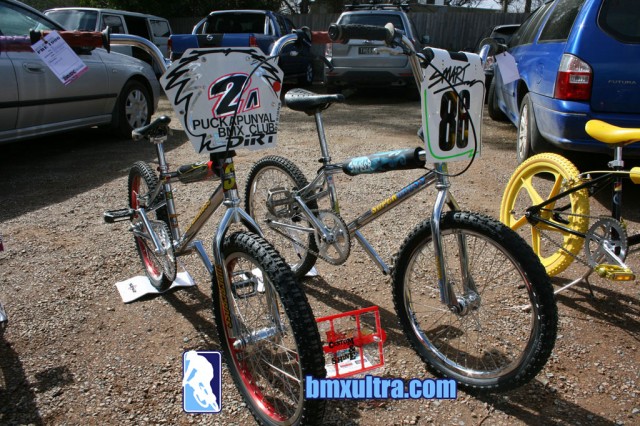
There are lots of cool innovations in some of the steels now, and we built a few frames from some of the Nivacrom that Columbus is doing,( http://www.columbustubi.com/
It is sad to see the freestyle side go back to Mild Steel as a cost savings measure.
We will continue to push the limit of what can be done with a good high end steel, and who knows, maybe the market will give it a second look one day.
bmxultra.com: What are the approximate years for the Devo – UL – RCR – BOLT – 450, anything else that should be added into that time line as far as cromo frames go?
Bill Ryan: The SX Series, SX125, SX250, etc… were the first cro-mo frames from 1989-1998 or so.
The DEVO’s were from 1999-2004
The UL was 2002-2006
The RCR was 2005-2008
The Bolt 2008 – 2014
The SX450 is from 2014 on
bmxultra.com: What can you tell us about the EVO prototype frames you had some people running at the Perth World Champs? I remember the chain stays were on backwards. The rear end never went into production?
Bill Ryan: Wow, 2003 Perth, that was a long time ago.
Back then we were really working with cruiser frame geometry. Everyone back then had the cruiser with higher BB’s and longer back ends, and honestly I thought they rode horrible.
I wanted ours to ride like a 20″ BMX. Make it easy for you to switch between two bikes to ride 2 classes.
I can’t remember the exact frames used at Perth, back then we did some with BOX stays, some with reverse stays, some with Monocoque stays, lots of experimentation.
The frames with monocoque stays were so rare, we only built maybe 2 of those, they were so expensive to make.
We were seriously looking at doing full monocoque frames, but the cost was so high and we wanted to do custom tapered monocoque sections.
I think we made 1 of the cruisers.
bmxultra.com: What can you tell us about the G6e frame? We read somewhere it uses ceramic aluminium?
Bill Ryan: The G6e was the progression of our G6 frames.
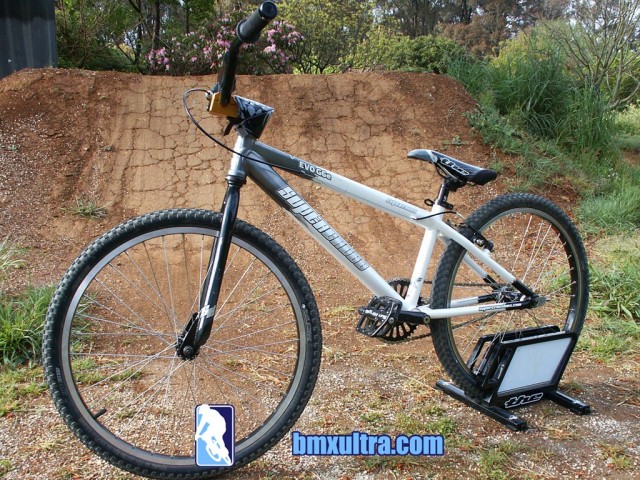
When we did our G6 frame, it was the 6th generation of our Frames, and we thought that G6 sounded racier than the sixth generation.
Those frames were built in 3 of our weld shops in Southern California along with Alliant for a little bit. This was also when we started working with Easton, and developed the S7 frames which were built from Easton Scandium material. The Scandium was super nice, and ultra light, super strong, but was also very expensive. Easton had a material EA6X that was a high ceramic 6000 series aluminum, and if you know your Supercross history, you know we like the high ceramic aluminums, they are super strong and build a real nice frame. Our first Aluminum frames were built with the High Ceramic 6013 and 6061 blends.
So the G6e was for the G6 frame, built from EASTON aluminum.Those frames were ridiculous, they were ultra light, ultra strong, but they were a pain for the welders as the ceramic materials tend to pop. We only ever built 200 of the G6e frames in all sizes. People didn¹t understand the value of the Easton material and the S7 cast a large shadow, everyone wanted the S7, and this was the first year we introduced the Import frames as well the iS series, and the G6e just sat in the middle. The sales on the iS series frames took off as we now had an Aluminum race frame that was available for $200 compared to the $400 of the older G6, and the G6e was at $400 and the S7 was at $700 and people went for either end of the spectrum, but not for the middle.
bmxultra.com: Approx what year was it?
Bill Ryan: The G6e’s were about 2006-2007 era.
bmxultra.com:How did the ENVY come about, what made it different to the S7?
Bill Ryan: We were looking for how to one up the S7, and we were also looking at more affordable options as the S7 had gotten up to $800 MSRP which for an Aluminum or in it’s case scandium frame, was pretty expensive for BMX, cheap compared to MTB and Road bikes built of similar material, but expensive for BMX.
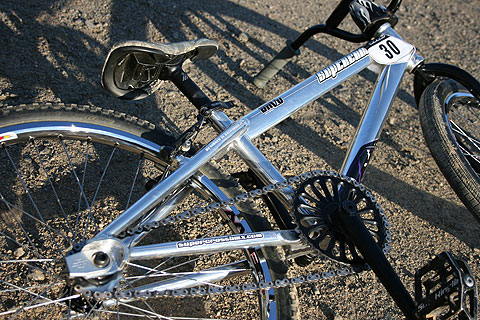
So working with some of the former engineers at Easton we were able to come up with a tubeset that was exclusive to us. It was Based off of their ULR Ultra Light Race 7005 Tubeset, but we did custom molds to do specific wall thicknesses, shapes and tapers, specific to BMX instead of the Road or MTB market.
And by doing that, we were able to come up with the ENVY race Frame. We were happy as it cut the price of the S7 almost in half and only added 1 ounce of weight.
bmxultra.com: Would you say the ENVY is the most popular SX frame ever made?
Bill Ryan: By shear numbers, the SX250 Pro XL cro-mo frame we started making in 1989 that ran to 1996 was by far the biggest seller, but the ENVY is pretty close.
bmxultra.com: If we are guided by industry trends carbon is the way of the future for BMX. There was a bit of a race between some of the manufacturers to get the first production carbon frames on the market, but Supercross appeared to hold back. Why was this? What makes Carbon frames different to any other frame?
Bill Ryan: It is not just the progression of the industry, it is the progression of the world, everything is moving forward, BMX is the same.
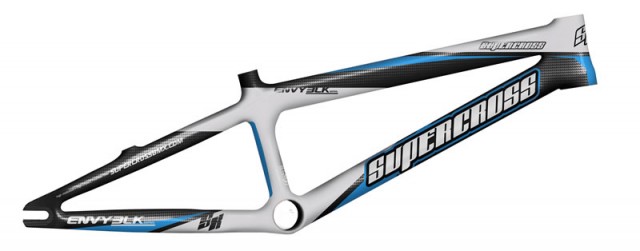
Racing, is all about Lighter, Stiffer Faster. We started off on Hi-Ten Steel, and a few dads that raced cars said, hey Cro-mo is better. Then a few aerospace dads said, no, aluminum is better, and now we have the market pushing forward again, carbon is better.
And not all carbon is better, just like not all aluminum is better. There are grades, there are techniques, there is a science. Some people laughed when we used the tag line Not all Carbon is created equal, but it is true, just as not all steel and not all aluminum, Titanium hell, Pizza for that matter. Will it be the future, for sure it will be a part of it, will it end here? No, the race for perfection is never ending, once you think something is perfect, you better think again as there is going to be a better way to do it, a lighter way a stronger way a faster way. Look at phones, TV’s , Cars…. Progression. And Carbon is the current progression.
We have some experience with carbon from before, we know how some carbon can fail and be catastrophic. We didn’t want any part of that. We started working on the current Carbon project back in 2007, but scraped it as the technology wasn’t there for us yet. We then looked at it again in 2010 , which may seem like a short time, but progression is being made daily in carbon and the new Nano Alloy and Nano Elastomer carbons are so cool. And the new molding processes, the high density, low void. It really has become the time for carbon. Even now, we thought we had it right, the FEA was done, Static and Dynamic and every thing checked out, but then a field test found a flaw, then we changed that and another field test found a flaw, so molds and tooling were revised, layups were revised, and we did more testing on computer , in the field and in the lab. We have passes the EN BMX Standards not only at the basic level but 3 times the level. We didn’t let demand and money run the project. We didn’t release the product until it was right. And I kept signing off on the mold changes to make sure we did it right, all which add up to dollars spent. But it had to be perfect when it came out. So am I upset that it is out a year later than it was supposed too be, yes. But I am not sorry, as we would of been sorry if we had released it then.
bmxultra.com: Is carbon for everyone?
Is carbon for everyone, no. Quite simply most riders will not use the full potential of a carbon frame, those same riders are not getting the full potential out of an aluminum frame either. But we are in a sport of racers and we want the best. And this is where carbon comes in. I guarantee you that most of the kids racing today if they didn’t know different and they got a cro-mo race frame and 1 pc cranks, wouldn’t know the difference. They would feel an advantage going to an aluminum frame and the 2pc 24mm spindle cranks, but are they using the full potential, no. Are they going to win more races, no. Unless everyone else on the gate is on them.
bmxultra.com: What makes Supercross carbon frames different?
What makes Supercross Frames different?? Trick question. A BMX frame is a BMX frame, you put wheels on it, a fork, some cranks, and it holds the parts together to ride. But we try to make sure that we try to build the best out there. People used to give us crap about our first Supercross frames with the secondary seat stay rear end, they said it was a gimmick, but it wasn’t. We saw that the current frames were flexing on the gate under load and we wanted to stiffen it up to let you launch better. And funny, not long after we did that, there were others that did similar things. But we always looked at concentrated heat zones and tried to spread them out to even out the stress load and any possible hydrogen embrittlement from the heat affected zones. That is why when we saw the frames with extra stays on the bb shell we knew that it was putting too much heat into a small area. And we try to look at every little detail to make the better BMX frame. Geometry, Angles, tube placement, stress flow. I know I probably sound stupid, it is a BMX frame dummy, right, isn’t that what you are thinking? How does all that make it ride better. It just does. It is almost like magic when you look at the details and optimize them for the situation that it will be used for. No excess, no fluff.

Supercross Parts & Accessories
bmxultra.com: What can you tell us about the spin drive hubs?
Wow, those are some oldies but goodies, those are some of the first SpinDrive hubs from 2002 or so if I am not mistaken.
Very very few sets made of the original style.

Mikey Day and Randy Roberts tested them out for me.
They are amazing. People didn’t like the look of them because it looked like a coaster brake, but the engagement was solid, the bearings were dialed, the double spring back up system and the offset ratchet made them engage fast and smooth.
They cost us a ton to make, but were awesome.
They led us into the next generation of Cassette hubs, the Pro LT’s.
I believe there were 20 sets made.
The machine shop charged us something crazy where they would of retailed for almost $800 USD
bmxultra.com: What can you tell us about the evolution of the strong arm cranks? What was the theory behind the boomerang shaped arms? How many sets do you think sold?
Bill Ryan: Wow, the infamous Bent Arms.

Well as a kid the Orange Y was my local track, and Pete Loncaravich used to ride there all the time. After he quit Diamond Back and SE, he started riding for a company that he and his dad started LRP. Now LRP was most famous for their pedal cages and Pete’s Dad used to be a partner in the little known TW racing, well since Pete was riding for LRP now they made him a frame, a fork and some cranks.
The cranks were like an old Diamond Back Turbo Crank, two 5/8″ round tubes stacked on top of each other, but Pete’s LRP’s were bent, they had the infamous Banana shape to them.
So I asked Pete, why the bent arms? He gave me a long story about how it is all about physics, the bent arm gives you a longer lever to get the bike going, but still retains the smaller spin circle. He explained that this way you can run a harder gear, and get out of the gate faster and still keep a spin by not having too long of a crank. HE also explained that if you ever tried to loosen a stuck bolt, that if you use a straight wrench it is hard, but if you use one of the snap on style BENT wrenches, it is way easier. I don’t know if it was true, but he had this kid hooked. I must of been 14 or 15 at the time and it sounded legit, and coming from Pete who was one of my BMX hero’s growing up, I believed.
So when we started to make cranks with Supercross, I remembered what Pete had shown me and we spoek about, I asked him if it was cool if I did a crank that way, and he said no problems, and we built the first 5 Cro-mo Strong Arms, we didn’t do the Stacked tubes like Petes’s were we did 1 round 7/8″ diameter tube.
We built 5 of them.Ken Cools got a set, Todd Steen Got a set, Tony Degolado got a set, BMX Plus! Magazine got a set and I don’t remember where the 5th set went. Todd swore by those things, except he kept snapping spindles with them. Well our welder was having a tough time keeping up with our Frames and Forks and told me he could do Frames or cranks, but not both.
So we stopped production on the cro-mo cranks, but we wanted to continue making the cranks. The machine shop that did our CNC’d parts for the cranks asked me if he was going to get another order for the CNC’d parts, and I told him no, that our welder wasn’t going to be able to do them. He asked me if I wanted to make some out of Aluminum, he had just done a run of MTB cranks for a company and that he used 7075 for the arms and they were super strong.
I started doing some research and was thinking about it, GT had the Power Series Aluminum crank out and they were OK, but they were a cold forged Aluminum and they still flexed a bit, but it was an interesting idea still, so I kept sketching and analyzing, and sketching and analyzing, and we decided to do a few prototype sets of 7075 Billet Aluminum arms, and we used an over size 1″ spindle. I knew the weak point on the aluminum cranks was the tapered spindle, so we used a double D style of shaft and it was a 1″ diameter, HUGE. And we used 7075 Aluminum Spindles as well to keep the weight down on the spindle. Since the spindle was so large we had to use a spider which was driven off of the spindle as well as bolted to the arm.
They were awesome, they were light, they were stiff, they were strong.
We went through 3 revisions of this design to get it right, going from C channel to I beam, and chainging pocket shapes to optimize stiffness and the proper flex and once we made those changes we put them out to the market, and we sold tons of them, way more of those cranks than our frames and forks. We were lucky to sell 25 frames and forks a month but we were selling hundreds of the cranks.
When the Dirt Jump/ Street market started to take off we saw crank sales start to drop, and eventually we tried to change them to adapt to a regular Profile or Redline Gear and the smaller spindle didn’t make them as stiff nor as strong and at the same time, our one machine shop took an aerospace job building landing gear for fighter jets and stopped making cranks for us, the next machine shops tollerances weren’t up to the same quality we had been used to and we just killed the cranks. Somewhere I have boxes of arms that are not finished as when I saw the quality of the cranks the new machine shop were putting out, we killed the job mid job. I was pissed. And we were not going to put out that product.
bmxultra.com: What can you tell me about the sinner cranks?
Bill Ryan: When we first stopped doing the original Strong Arms, the bent arm design we started doing the new Strong arms, the hollow Cro-mo crank arms running off the 3/4″ spindle. It was a great cro-mo crank and fit the market wants.
Right after we came out with this new model, which wasn’t exactly new, it was a modified version of the High End crank GT was making before they filed for bankruptcy. We had bought the tooling and modified it for our use.

Shimano came out with the SAINT cranks, and I was like, dammit, they get it, Big Aluminum Arms, and the Oversize spindle. Much like our Strong arms we were making in the early 90’s just updated with Shimano technology which was bad ass, those hollow cold forged arms were amazing. There was no way we could afford to do a Cold Forged Hollow arm. The tooling costs were way too high and the market was still declining, so we adapted the 24mm spindle to the new Strong arms we were doing,
And one of our riders made a Black Sabbath reference about them, I can’t remember who, but they were joking around that Heaven and Hell, Sinners and Saints and we jokingly started calling these cranks the sinners, and it stuck.
We sold about 800 of them before we had a problem with a heat treater and they over heat treated the spindles on a batch and caused them to be a bit brittle. So we had a few of them crack. So we stopped production on them to set up a better QC system to check the hardness and we built maybe 200 more and they just never took off, the Aluminum arms of the Saints and the DXR’s were taking off so the Sinners just faded away.
We still make the Strong arms of that version, Aaron Johnson put some on his race bike yesterday and Randy Roberts still runs them.
Posted in: Interviews · News

